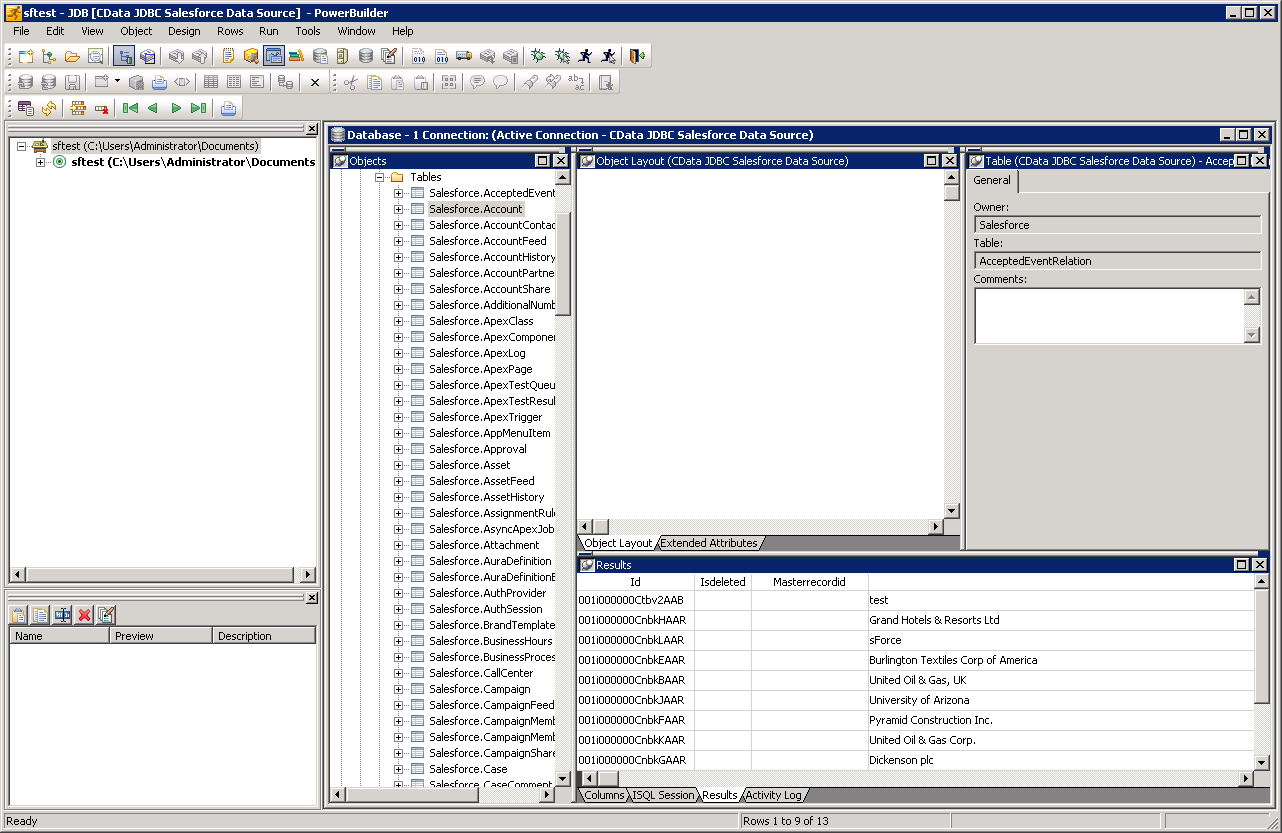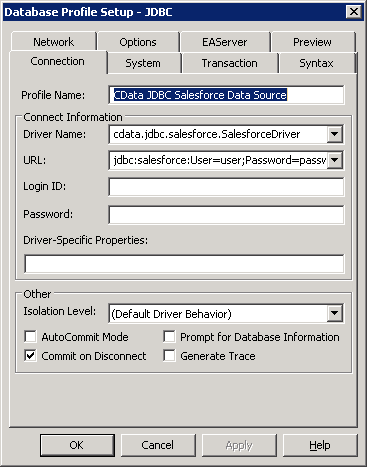Discover how a bimodal integration strategy can address the major data management challenges facing your organization today.
Get the Report →Connect to TaxJar Data from PowerBuilder
This article demonstrates how to access TaxJar data from PowerBuilder using the TaxJar JDBC Driver.
The CData JDBC Driver for TaxJar is a standards-based control that can be used from any platform or development technology that supports JDBC, including PowerBuilder. This article shows how to use the CData JDBC Driver for TaxJar in PowerBuilder.
This article shows how to create a basic PowerBuilder application that uses the CData JDBC Driver for TaxJar to perform reads and writes.
Connect to TaxJar Data from PowerBuilder
Follow the steps below to use the Database Painter tool to create a database profile based on an JDBC URL for TaxJar. You can use a database profile to save connection properties. In the Database Painter, you can graphically manipulate data as well as execute SQL queries.
Add the driver JAR to the PowerBuilder classpath. Set the CLASSPATH system environment variable to the path to the driver JAR, located in the lib subfolder of the installation directory.
Note: If you are using PowerBuilder Classic, you can also add the path to the driver JAR by clicking Tools -> System Options -> Java.
- Click Tools -> Database Painter.
- Right-click the JDBC node and click New Profile.
- In the Database Profile Setup dialog, enter the following:
- Profile Name: Enter a user-friendly name for the profile.
- Driver Name: Enter the class name of the driver, cdata.jdbc.taxjar.TaxJarDriver
- URL: Enter the JDBC URL.
To authenticate to the TaxJar API, you will need to first obtain the API Key from the TaxJar UI.
NOTE: the API is available only for Professional and Premium TaxJar plans.
If you already have a Professional or Premium plan you can find the API Key by logging in the TaxJar UI and navigating to Account -> TaxJar API. After obtaining the API Key, you can set it in the APIKey connection property.
Additional Notes
- By default, the CData connector will retrieve data of the last 3 months in cases where the entity support date range filtering. You can set StartDate to specify the minimum creation date of the data retrieved.
- If the API Key has been created for a sandbox API account please set UseSandbox to true, but not all endpoints will work as expected. For more information, refer to the TaxJar developer documentation.
Built-in Connection String Designer
For assistance in constructing the JDBC URL, use the connection string designer built into the TaxJar JDBC Driver. Either double-click the JAR file or execute the jar file from the command-line.
java -jar cdata.jdbc.taxjar.jarFill in the connection properties and copy the connection string to the clipboard. A typical JDBC URL is below:
jdbc:taxjar:APIKey=3bb04218ef8t80efdf1739abf7257144;
![The JDBC data source defined in the Database Profile Setup dialog. (Salesforce is shown.)]()
- To view and modify a table, right-click a table and then click Edit Data -> Grid.

Using TaxJar Data with PowerBuilder Controls
You can use standard PowerBuilder objects to connect to JDBC data sources and execute queries. The following example shows how to retrieve TaxJar data into a DataWindow. You can add the following code to the open method:
SQLCA.DBMS = "JDBC"
SQLCA.AutoCommit = False
SQLCA.DBParm = "Driver='cdata.jdbc.taxjar.TaxJarDriver',URL='jdbc:taxjar:APIKey=3bb04218ef8t80efdf1739abf7257144;";
CONNECT USING SQLCA;
dw_orders.SetTransObject(SQLCA);
dw_orders.Retrieve();







